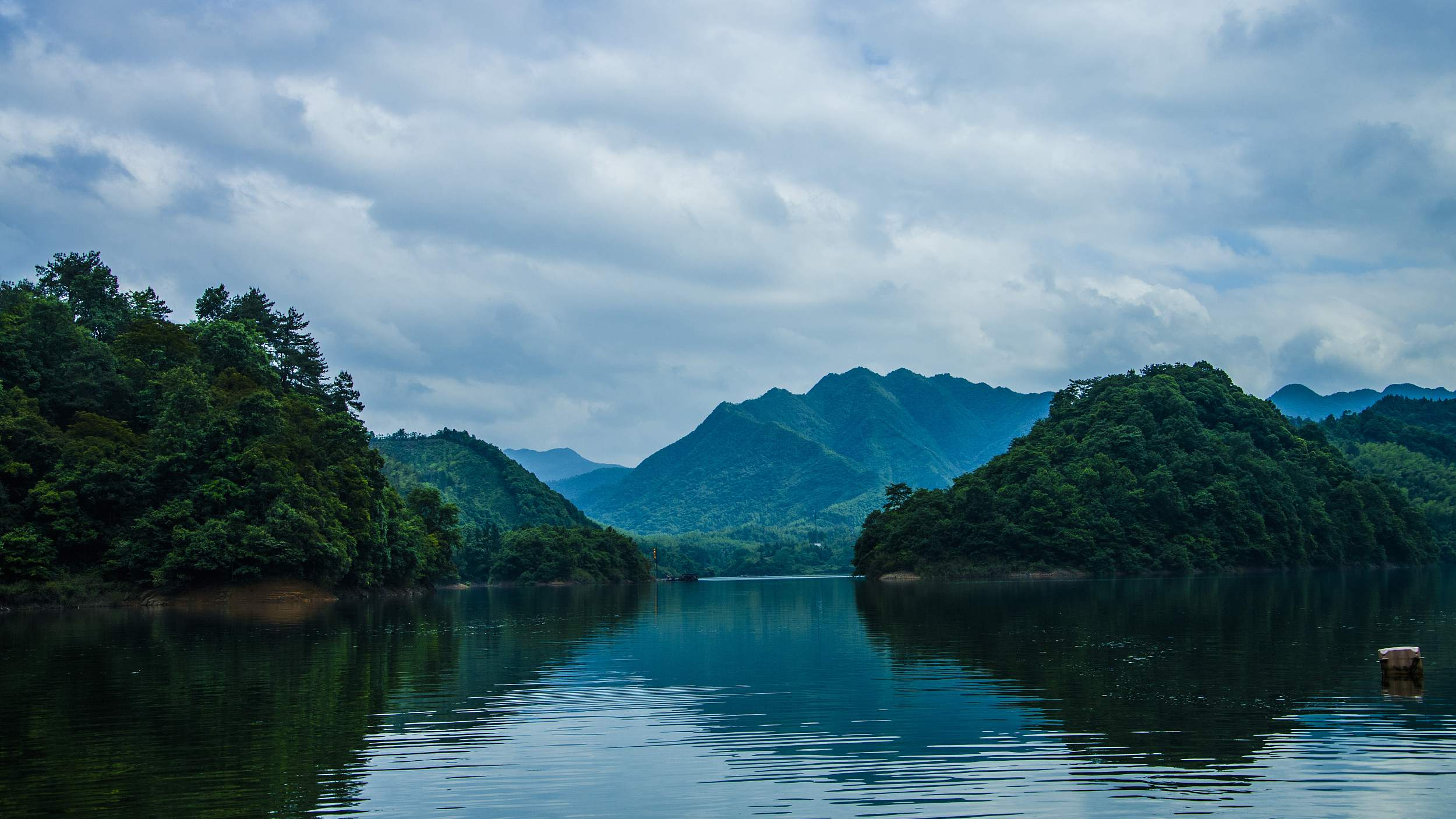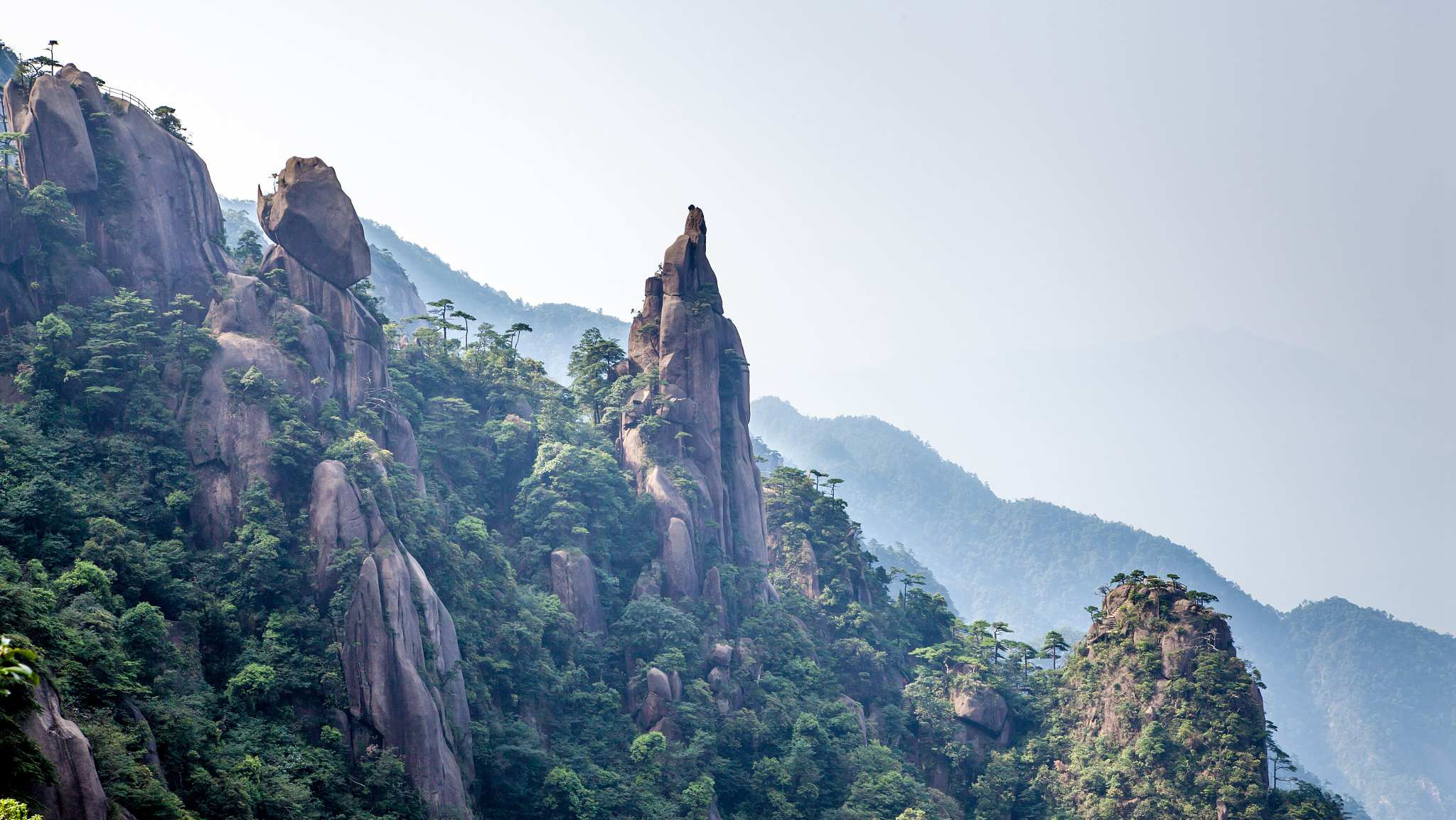
Earth
12:18, 18-Apr-2019
Two more Chinese sites given UNESCO Global Geopark Label
Updated
17:11, 18-Apr-2019
CGTN

Two Chinese geoparks have been added to the list of 11 designated sites in Asia, Europe, and South America to receive the Global Geopark Label, the Paris-based United Nations Educational Scientific and Cultural Organization (UNESCO) announced on Wednesday.
Along with the three existing geoparks on the list, China now has five geoparks with the Global Geopark Label.
"UNESCO's Executive Board today approved the designation of eight new sites demonstrating the diversity of the planet's geology as new Geoparks and also approved the extension of three existing Geoparks," the organization said in a statement.
Among the newly designated sites, the Global Geopark of Jiuhuashan, or the "Nine Glorious Mountains," is located in the Qingyang County of east China's Anhui Province.

The Tiantai Temple on the Tiantai peak of Jiuhuashan. /VCG Photo
The Tiantai Temple on the Tiantai peak of Jiuhuashan. /VCG Photo
With 9.9 million visitors in 2016, "Jiuhuashan's unique and favorable geological conditions have contributed to the flourishing of the region's biodiversity and cultural traditions," the statement added.
The second new Chinese site is the Yimengshan Geopark located in east China's Shandong Province. It is home to one of Asia's largest kimberlite-type diamond mines. Moreover, it is known for a landscape dotted with Daigu, castle-shaped land formations, and multiple sites of cultural heritage, including the Zhou dynasty Wanshou Palace.
UNESCO also approved the extension of Funiushan, in the east section of Qinling Orogenic Belt and collision zone between the North China plate and Yangtze plate.
According to the statement, "its unique geological structure and complex activities account for its rich geological heritage, which includes paleontological fossils and exquisite granite land formations."
The list of extended Chinese sites also includes the Sanqingshan UNESCO Global Geopark with "natural beauty of Mount Sanqingshan derives from the juxtaposition of granite stone and vegetation in a landscape that is ever changing visually due to meteorological factors."

View of the Sanqingshan Geopark. /VCG Photo
View of the Sanqingshan Geopark. /VCG Photo
Shanqingshan hosts 238 Taoist relics and other important emblems of cultural heritage such as ancient academies, dwellings, a theatre, monumental halls and more.
The third extended site is Taishan. Located in the center of Shandong Province, it is considered as "a natural geological museum" due to "its unique, abundant geological heritage."
The other sites that received the label are Kutralkura in Chile, Vis Archipelago in Croatia, Imbabura in Ecuador, Trollfjell in Norway, Colca y Volcanes de Andagua in Peru and Courel Mountains in Spain.
(Cover image shows the view of Jiuhuashan via VCG .)
(If you want to contribute and have specific expertise, please contact us at nature@cgtn.com)
Source(s): Xinhua News Agency

SITEMAP
Copyright © 2018 CGTN. Beijing ICP prepared NO.16065310-3
Copyright © 2018 CGTN. Beijing ICP prepared NO.16065310-3